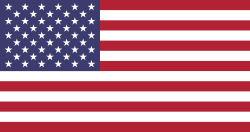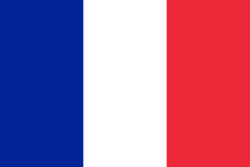5 types of websites and how to choose which one will help your business the most to create & design
1. E-commerce websites
E-commercewebsites allow users to shop for and purchase products or services online. Amazon, Bookshop, and other retailers that sell products through an online store are great examples of E-commerce sites. These websites make it easy to drop items in your cart and checkout using your credit card, a payment service like PayPal, or an e-commerce platform like Shopify.
E-commercewebsite design
Different types of website design call for different elements. When building an e-commerce website, you’ll need a shopping cart component that allows users to add and remove products and also lets you set pricing, offer deals, and establish discounts. You need a payment gateway so users can complete their transactions.
As you approach your e-commerce website design, it’s important to think about how your visitors will interact with your site. Chances are, you’ll want to offer discounts and promotions in the future, so build that functionality into your site from the beginning.
Make it easy for potential customers to find what they want in the least amount of clicks. You can keep the shopping experience streamlined by breaking the products in your e-commerce store into categories that visitors can filter by. Including a robust search functionality is a nice touch, too.
Don’t forget about product photos. Many different kinds of websites rely on great photography, but for e-commerce websites, your photos can make or break your sales. Use high-quality images to ensure trust in your brand and showcase your current deals on the homepage as high up as you can.
2. Personal websites
Personal websites are for individuals who want to have an online presence to voice their opinion, help with job prospects, or establish their own personal brand.
Most personal websites are fairly simple, with images and a lot of text. Since personal websites are shared with friends, family, and colleagues manually, they don't typically require any lead generation tools or SEO. However, if you plan to use your own website to promote yourself as a professional, it certainly doesn't hurt to optimize your content to appear in search engines.
Personal website design
For this type of website, the design elements really depend on the purpose of your personal website. Will the site be something you share with friends and family just for fun or are you trying to build a brand? If it’s the latter, you’ll want to create a recognizable look and feel for your personal brand.
Next, decide if you’ll be selling services through your site or using it as a central place for your online presence. For the former, you’d need to set up landing pages with different service packages. For the latter, you could get away with just adding your contact information and encouraging potential clients to reach out.
Regardless of whether your website is for business or pleasure, a personal blog could be a nice addition. This way, you can frequently update your site by sharing your thoughts on your area of expertise or share your life through blog posts.
Personal website design
For this type of website, the design elements really depend on the purpose of your personal website. Will the site be something you share with friends and family just for fun or are you trying to build a brand? If it’s the latter, you’ll want to create a recognizable look and feel for your personal brand.
Next, decide if you’ll be selling services through your site or using it as a central place for your online presence. For the former, you’d need to set up landing pages with different service packages. For the latter, you could get away with just adding your contact information and encouraging potential clients to reach out.
Regardless of whether your website is for business or pleasure, a personal blog could be a nice addition. This way, you can frequently update your site by sharing your thoughts on your area of expertise or sharing your life through blog posts.
3. Portfolio websites
While similar to a personal site, this type of website is all about showcasing your professional work with the goal of winning clients.
A portfolio website is a canvas for designers, writers, videographers, artists, and other creative professionals. These types of websites exist to highlight specific skill sets and services that freelancers offer.
Don't feel like you have to display every project you’ve worked on. Select your best work and split the projects into categories, so it’s easy for your audience to find what they need. Be sure to highlight each project by telling the story behind it. You can also include details about what tools of your trade you're familiar with, like a specific website builder, SaaS tool, or software.
Be sure to double check with your past clients before sharing their projects in your online portfolio — not all customers will want their proprietary designs featured. You can also limit access to your work by password protecting certain project web pages and asking serious clients to contact you for the password.
And while you’re at it — ask your previous customers to share their thoughts on your services. Including client testimonials on your portfolio website is a great way to let your satisfied customers sing your praises and sell your services for you.
4. Small business websites
A small business website provides an online presence so people can learn about a company, its employees, products, services, and culture. The goal of a small business website is to provide information so customers can reach you directly. Examples include local accounting firms, service providers (plumbers, HVAC, etc.), restaurants, and law offices.
Small business website design
Your small business website helps you convert visitors into customers. The design should match your company branding, along with your tone of voice. If you’re a local bar, your site might include photos of your business and focus on dark colors to give off smoky bar vibes. If you’re a small pet grooming business, your design will likely be brighter and full of pet photos.
Regardless of what type of business you are,your website should include your logo, preferred design elements, and quick and easy navigation for users to find areas on your website.
Always include an About Us page so visitors can quickly get to know your business. Ensure that your contact information is easily accessible so potential customers can get in touch. Small business websites also need to have SEO-friendly features so you drive search traffic to your site.
5. Blog websites
A blog website is regularly updated with relevant articles, videos, and photos meant to inform, entertain, and educate your audience. Blogs are sometimes platforms to voice an individual's opinion, or a company may have one to offer valuable content to their customers. These types of websites can either put the main focus on the blog itself — centering the site around the regularly updated content — or be built into a larger website.
Blog website design
Blogs come in all shapes and sizes, but an essential element to any blog is organization. Your readers need a simple way to find items of interest, so good category-navigation (like sidebars on blog pages) is critical. Expert content and interesting opinions are also key. Check out our selection of great blog templates and tools to design any type of blog.
Often, blogs skip the large image slider at the top and get right to the content. Use visual elements (icons, photos, artistic design) to highlight a category or new piece of content. If you want to grow your audience, add a CTA and newsletter sign-up area to grab visitor's email addresses. This way, you can keep your readers engaged with exclusive newsletter content and make sure they’re aware of your recently published blogs.





